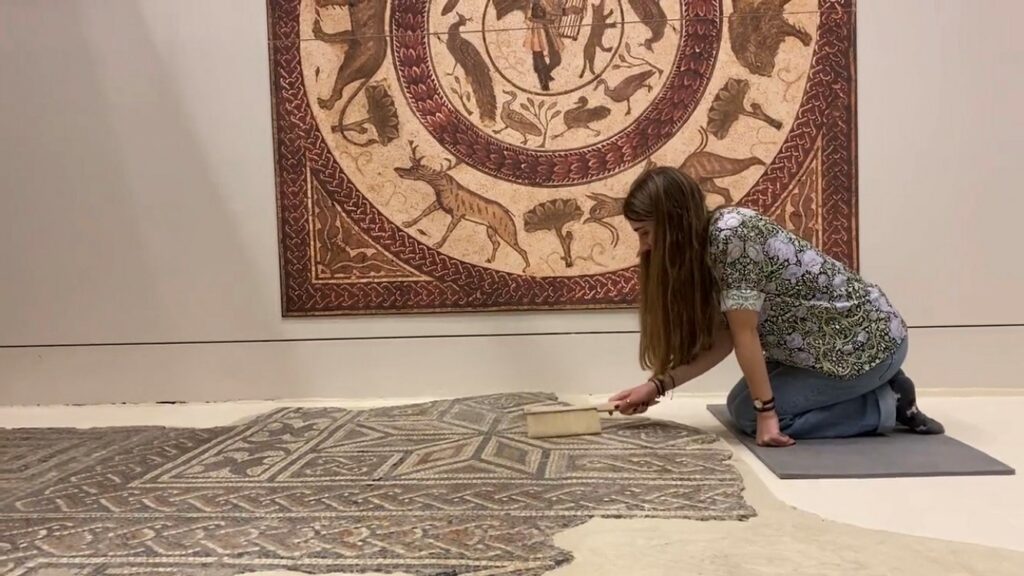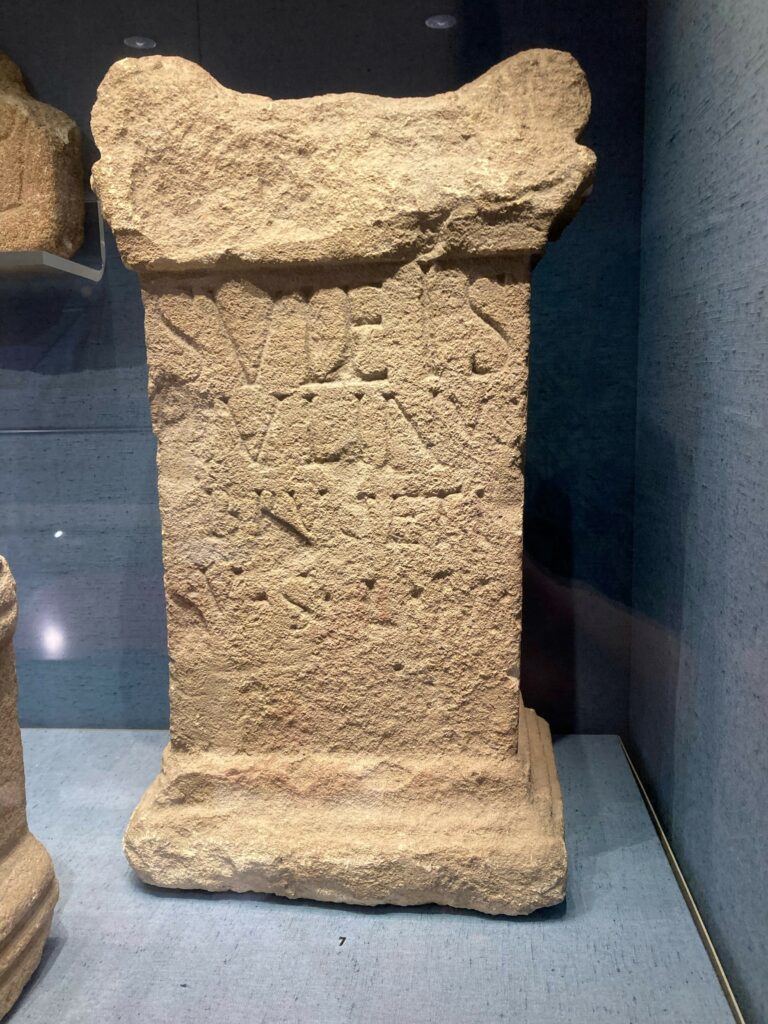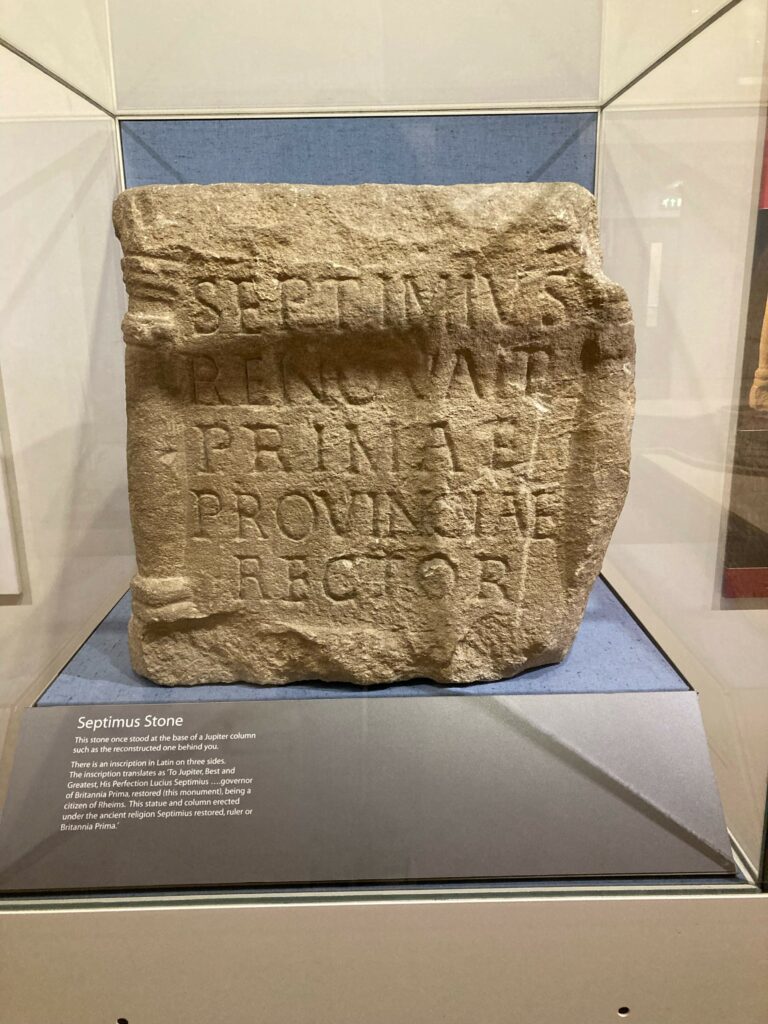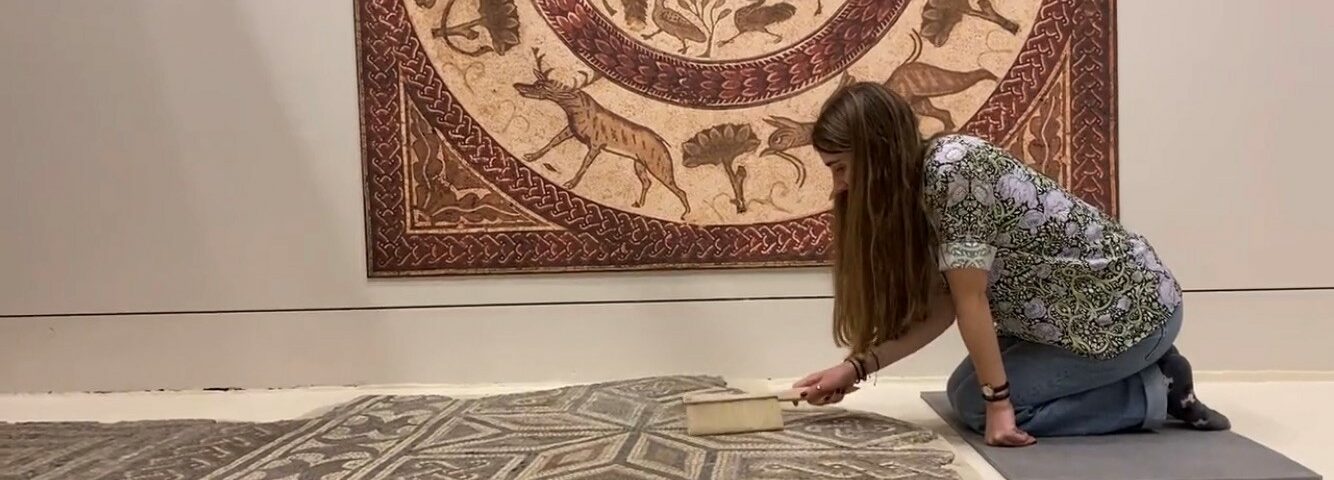Blog post by Alice Westmacott
I was really lucky in having the opportunity to come to the Corinium Museum for two weeks as a placement with the Roman Society, where I was able to gain valuable experience working in a museum environment and with public engagement. My tasks included working on a highlights tour of Roman epigraphic material in the museum. This involved looking around the museum and choosing stand out objects to create a tour which would encourage more people to look at and learn about epigraphy. I was also tasked with creating a leaflet to go alongside this to be available to visitors should they be interested in a self guided highlights tour. This was great practice in creating resources with visitors in mind.

Another way we thought could get people to engage with inscriptions and stonework was by hosting a handling table – this allowed me to talk to a range of visitors, discuss epigraphy and stonework and get close up to objects not normally out on display.
Alongside Katie, another student here, I was able to create some digital content for the museum’s social media pages and blog. We went around the museum and discussed how we could use social media to increase interest and awareness in the epigraphy collections and created content to showcase this.

Alongside these tasks there were lots of opportunities to go behind the scenes in the museum. This included seeing the collections not on display and helping to organise these, as well as getting involved in mosaic cleaning whilst talking to visitors – it was incredible to see the mosaic up close.
This experience has been so valuable in learning more about working within a museum as well as public outreach.

Being here was also an opportunity to explore my different areas of interest within Roman History, due the wide and varied collection. Through the focus of epigraphy I was able to talk to staff and discuss connections with other artefacts, including those around the country. Something that really caught my interest when looking into the epigraphic material in the museum was the inscribed altar to the mother goddess (Sulviae) and the connection this has with the worship of Sulis in Bath. An altar similar to the one in the museum was also found in Bath and was dedicated by the same person. This suggests there may have been worship of the same deity in the surrounding areas with differing variations of the same name. This connection between deities in other places is something I would like to do more research in in the future and I’m grateful to have been able to begin exploring this.

The Septimius Stone was also of large interest to me and was also something I chose to include on my highlights tour. It was interesting to analyse this as evidence of religious tensions due the introduction of Christianity and how this played out in everyday life.
Thank you, Corinium Museum staff, for taking me on as a placement and being so welcoming! I’ve learned so much and will be returning to university with lots of ideas for further research.










